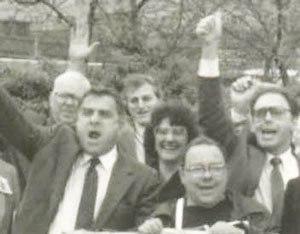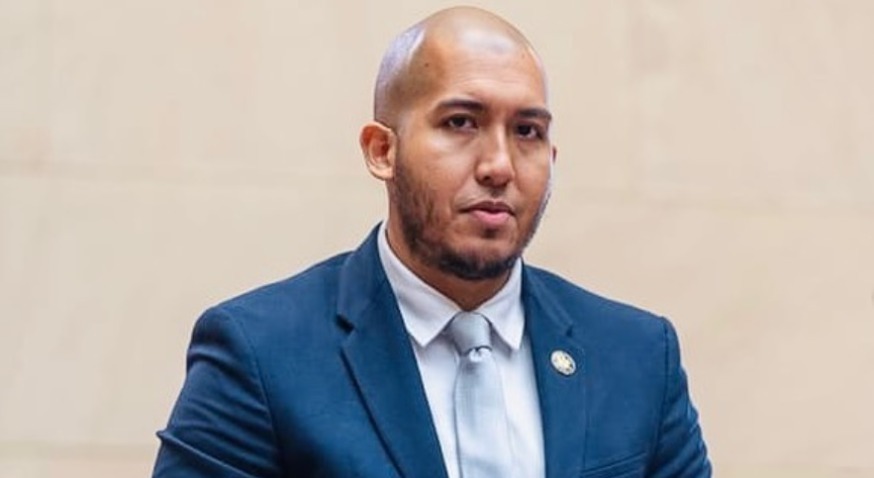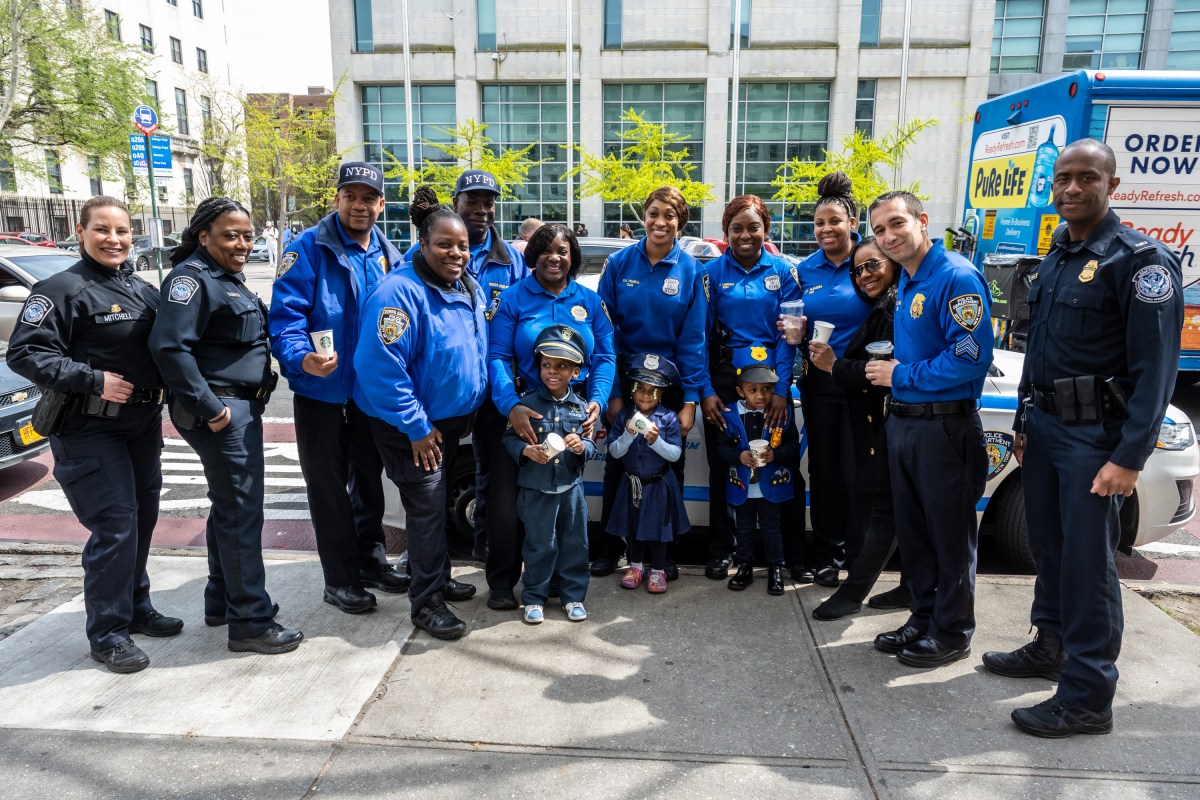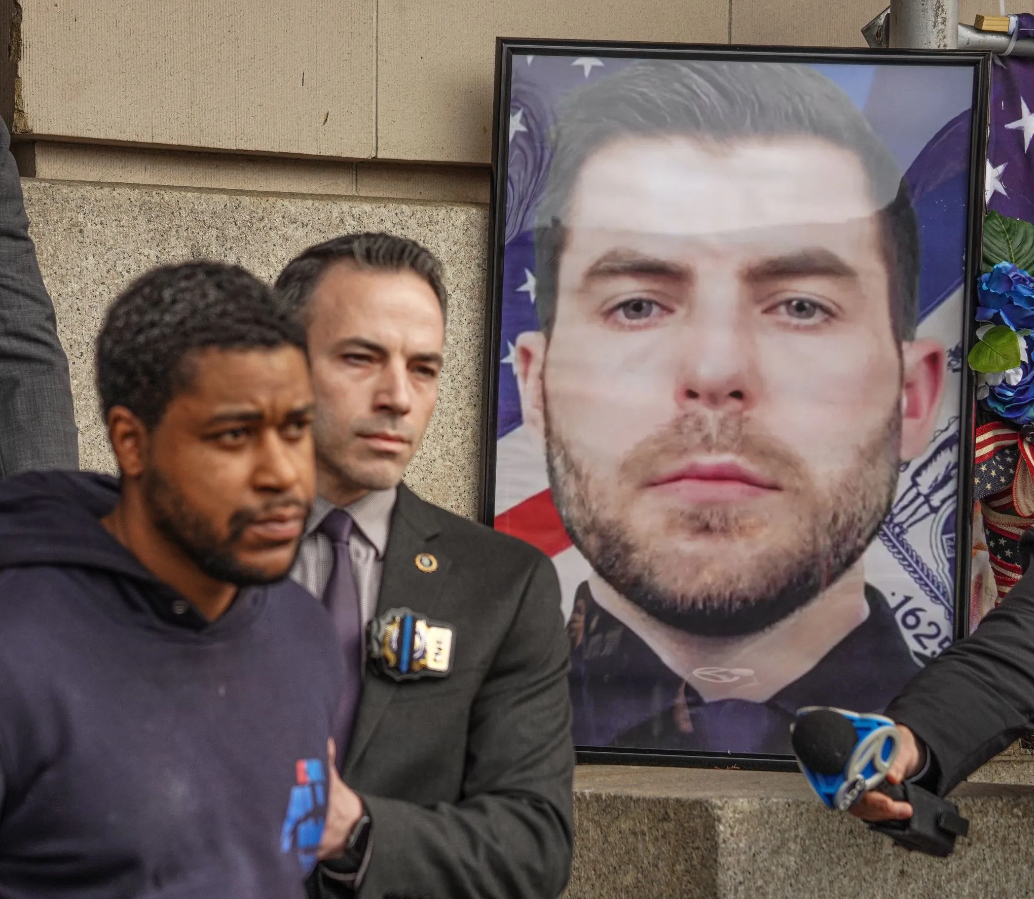
BY ALBERT AMATEAU | Bill Hine, a Village resident for 50 years and a passionate advocate for neighborhood preservation, especially of the waterfront, died Sept. 7. He was 79.
For the past several months he had been in an Eastchester nursing home where he went after emergency surgery, according to his sister, Lois Stringham, of Prescott, Arizona.
For many years a public member of the Community Board 2 waterfront and landmarks committees, Bill Hine developed an expertise on waterfront history and policy.
He co-wrote, with Robert Smith, an article for The Villager in 2008 urging the immediate repair of the pilings of Pier 40 and suggesting that the Port Authority should pay the cost. The authority, Hine argued, had switched off an electrical system that sent a current through the pier’s metal pilings to help preserve them, thus hastening their corrosion.
In 2005, The Villager published Bill’s detailed letter opposing the city’s proposed use of the Gansevoort Peninsula as a marine transfer station, emphasizing the potential danger to Hudson River Park pedestrians and cyclists posed by garbage trucks loaded with recyclables turning onto the peninsula from the West Side Highway. A year later, Bill wrote again in The Villager on the same subject, urging that recyclables be moved by rail.
A soft-spoken man with courtly manners, Bill spent many hours in the Jefferson Market Library researching waterfront history. He was a member of former Manhattan Borough President Ruth Messinger’s Waterfront Advisory Committee in the 1990s. As a member of Save the Piers, a waterfront preservation group, he advocated in vain for the preservation of the original Hudson River bulkhead capstones as part of the Hudson River Park.
Robert Smith, Bill’s co-author of The Villager articles, recalled a phone conversation a month or two before Bill died.
“His mind was still on the battle to save the piers, to get the Port Authority to pay for the restoration of Pier 40 and to get the Department of Sanitation off the Gansevoort Peninsula,” Smith said. “Bill was never one to give up a fight for the community. If he were alive, I’m sure he would be in the library researching and looking for a peg to put his next article on.”
Carol Gordon, a fellow member of Save the Piers, said, “Bill was an inspiration. Among his legacies were the ideas that there should be a place on the waterfront where you could still reach the shoreline and where people could connect with water underneath them by walking on little archways [a design feature incorporated in part of the park]. Bill had a strong vision for a noncommercial waterfront that would preserve history. He loved the bulkheads and the planks and all the possibilities that saving the piers offered.”
Gordon said the group’s founding members were Hine, herself, Robert Smith (then known as Robert Trenour) and Liz Shollenberger.
“We were Save the Piers,” Gordon said. “It was Bill who really had this vision and tried to get people excited.”
Andrew Berman, director of the Greenwich Village Society for Historic Preservation, said, “Bill lived and breathed neighborhood preservation issues. There wasn’t a single time that I would bump into him that there was not something that he wanted to discuss. He had a genuine passion for protecting the neighborhood.”
His Bank St. neighbor, the actress Dina Paisner, recalled Bill as “the consummate gentleman,” always offering to help carry packages. Another neighbor, the musician Jake Jacobson, said Bill was a friendly but intensely private person.
Bill Ira Hines was born in Blackwell, Oklahoma, the son of Opal and Walter Hine, and raised on a wheat farm in the northern part of the state, according to his sister.
“He was constantly sketching and taking photos, totally self-taught until he entered college,” Stringham said. “As a teenager he would drive a tractor while sketching. He had an incredibly creative and analytical mind.”
Bill went to the Art Center School, Los Angeles, which later became the Pasadena School of Design, and earned a B.A. with a major in industrial design. In New York, he worked for Loewy/Snaith design, founded by the renowned industrial designer Raymond Loewy. After several years, Bill worked as a freelance designer.
“Bill photographed the Brooklyn Bridge on its 100th anniversary,” Stringham said. “He received permission and went to the top of the bridge to make the photos, which were published in 1983 in the Smithsonian magazine, Newsweek and New York magazine.”
He also created SNAP, a game that was sold at the Museum of Modern Art store. He designed “Winter Tree,” a holiday card for UNICEF, and another card, “Winter’s Image,” which was sold at the MoMA store.
“I recall that for at least 36 years, the waterfront, saving Governors Island as a national monument and historical preservation in the Village were his major concerns,” Stringham said. “I visited him in July. He was struggling with failing health and was still trying to research, write and be involved in the waterfront.
“Being very thoughtful and considerate of others was always a part of Bill’s personality,” she added.
Tobi Berman, chairperson of Community Board 2, remembered Bill Hine as a man who always had unusual ideas that were always sensible but often politically impractical.
“He was a dedicated and always-present participant at hundreds of meetings when an extraordinary ad hoc group of equally important volunteers invented the Hudson River Park,” Bergman said.
Gordon said a lasting symbol of Hine’s waterfront legacy is the ghostly metal pier-shed archway that still frames the entrance to Pier 54 at W. 13th St., along with some collected original granite bulkhead capstones.
“That was Bill,” Gordon said. “That was 100 percent him. That was the pier where the Carpathia brought the Titanic survivors. He just thought it was so beautiful and historic and it should remain for generations to see.”
Although Pier 54 is being demolished for the new Pier55 project, the historic pier shed arch will be preserved.
With reporting
by Lincoln Anderson

















